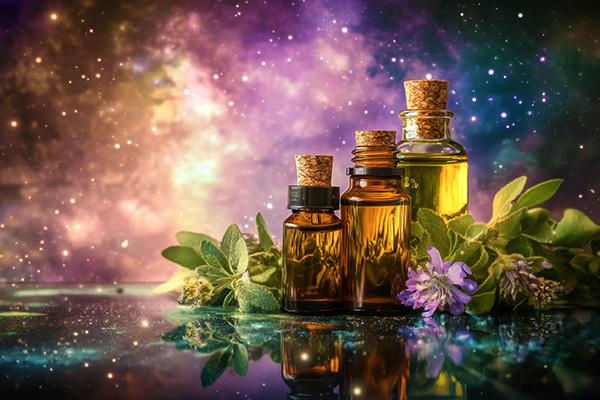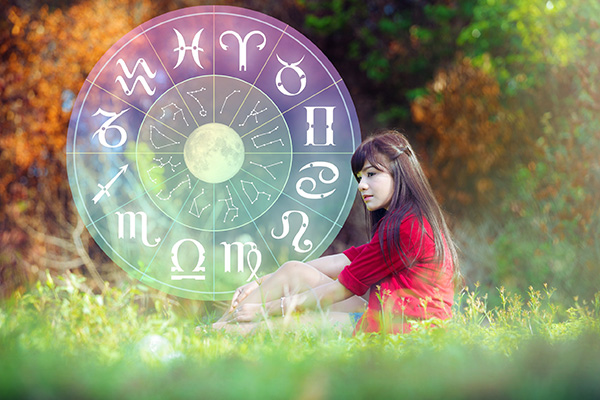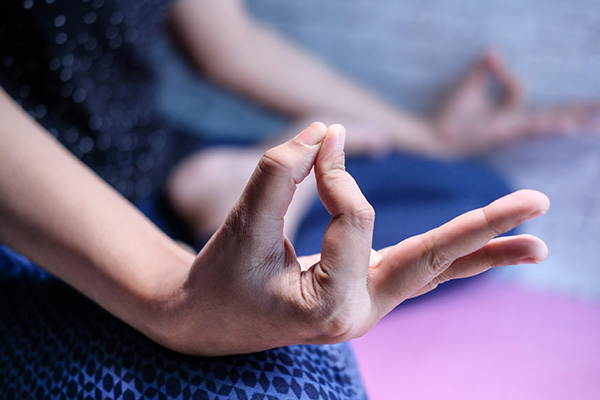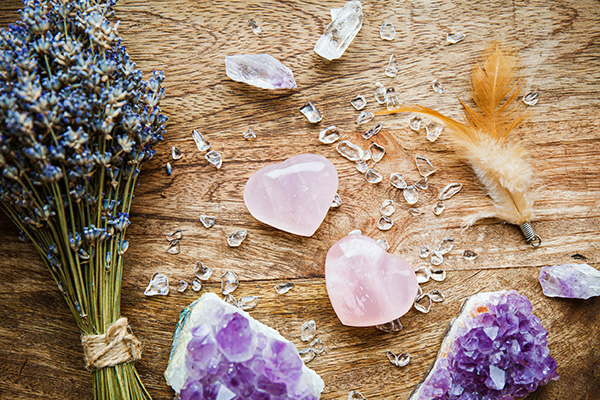 Every spiritual belief system refers to a dimension beyond our reality — a mystical realm that lies just out of reach of our physical senses. Be it Nirvana as per Buddhism, Asgard from Norse lore, or the Elysian Fields treasured by the ancient Greeks, these elevated realms are regarded as sites of enlightenment and holiness.
Every spiritual belief system refers to a dimension beyond our reality — a mystical realm that lies just out of reach of our physical senses. Be it Nirvana as per Buddhism, Asgard from Norse lore, or the Elysian Fields treasured by the ancient Greeks, these elevated realms are regarded as sites of enlightenment and holiness.
While these dimensions are typically linked to the afterlife, this is merely one facet of the truth. In reality, we don’t have to pass away to access these realms. These elevated levels of existence may be journeyed through while we still inhabit our physical bodies.
Throughout centuries, mystics, shamans, and seers have shared insights about these realms, and contemporary science — especially in quantum physics and consciousness research — is beginning to validate the existence of multiple dimensions, parallel universes, and alternate timelines. Instances of déjà vu or lucid dreaming, for instance, may serve as fleeting intersections between timelines or conscious connections with other dimensions where alternate versions of ourselves are present.
So, how can we deliberately access these enigmatic realms? Practices such as astral projection — referred to as astral travel, out-of-body experiences, or lucid voyaging — provide one route to do so.
The notion of consciously traversing beyond the physical body appears across various cultures and spiritual practices throughout history. Despite differing interpretations, many societies have woven this concept into their myths, religious rites, and esoteric philosophies.
The ancient Egyptians, for instance, held the belief in the ba, a soul component that could separate from the body and traverse realms. Tomb art often showcases figures depicted with bird-like images of the Ba, symbolizing the soul’s ability to rise beyond earthly life.
I am not merely my physical form. Since I exist beyond physical substance, I can perceive that which surpasses the physical realm ~ Robert Monroe
<pNumerous indigenous cultures embrace the notion of spirit journeys. For example, shamans believe they can project their consciousness to connect with spirits, visit sacred spaces, and offer healing. Shamans from Native American, Amazonian, and Siberian traditions frequently recount their ventures into the spirit realm during trance states.
In Hinduism, the idea of the sukshma sharira (subtle body) permits followers to embark on spiritual expeditions beyond the material world. Yogis and mystics aspire to attain samadhi, a state of elevated awareness. Buddhism similarly investigates the capacity to project consciousness through meditative states, especially within Tibetan customs, wherein monks engage in practices like dream yoga to traverse various realms.
Ancient Chinese Taoist beliefs highlight spiritual immortality and energy transformation. Works such as the Zhuangzi describe sages who can detach from their physical forms and traverse celestial landscapes.
During the late 19th and 20th centuries, astral projection became prominent in Western esotericism, particularly within Theosophical and Hermetic circles. Influential figures like Helena Blavatsky, followed by Alice Bailey and Robert Monroe, extensively explored the astral experience, characterizing the astral plane as the realm of emotions and desires — one of multiple layers of existence beyond the physical.
Cultures interpret astral projection in diverse ways; some view it as a means of spiritual ascension, while others see it as a mystical practice for self-exploration. This practice has motivated countless seekers to delve into the realms of elevated consciousness in the astral domain. In contemporary times, many spiritual practitioners incorporate astral projection into their spiritual practices.
As each state is entered, the horizon expands, the vista broadens, and comprehension encompasses more and more… ~ Alice A. Bailey
Comprehending The Astral Plane
The astral plane isn’t a tangible location, but a non-physical realm of existence where our awareness can transcend the material world’s confines. Acting as an intermediary space between the physical world and elevated spiritual dimensions, the astral realm is a delicate, non-physical plane where consciousness can surpass the body’s limitations.
Some belief systems also associate it with varying levels of vibration — lower astral realms may signify chaotic energies, while upper astral realms are perceived as serene and enlightened.
In contemporary metaphysical thought, the astral plane is viewed as the destination for astral travel, lucid dreaming, and out-of-body experiences, serving as a platform for soul evolution and a conduit to heightened insight.
Accessing the astral realm occurs during altered subconscious states, particularly during dreaming, or in deep meditative states when we tap into more elevated consciousness. Each person possesses the innate capability to shift their awareness into these altered states, especially while asleep, meditating, or deeply relaxing.
Some individuals also induce these altered states using breathwork, sound therapy, fasting, or psychoactive substances—though the latter carry inherent physical and spiritual health risks and should be approached with caution and proper guidance.
Profound dreams, unexpected out-of-body experiences (OBEs), and moments of intense intuitive insights point to our potential connection with the astral realm.
As the astral plane is highly sensitive to thought and emotion, it’s crucial to enter it with clear intent and a calm mindset. Staying grounded and protected while venturing into the astral realm is vital, as chaotic thoughts, emotional upheaval, or negative energy can attract lower vibrational entities and experiences.
Establishing boundaries, shielding your energy field, invoking spiritual or divine protection (like a trusted guide, angel, or deity), and having a solid exit plan are essential practices to ensure safety and promote positive experiences.
A limitless escape into the unseen corners of the mind and at the same time a form of magical space where we can “visit” extraordinary places, or even revisit past events that have transpired ~ Emma
The Significance Of Astral Guides
A crucial factor for successful and safe astral projection is the presence of one or more astral guides or spirit protectors. These benevolent, non-physical entities act as guardians and navigators during your out-of-body experience. Whether referred to as spirit guides, angels, ancestors, totems, ascended masters, or deities, their essence remains constant, guiding us in the astral dimension with wisdom and care.
Many first encounter their guides in dreams or childhood, when the barrier between worlds is thinner. Those “imaginary friends” you once interacted with may have been early expressions of your guides. As adults, we can reconnect with them through meditation, prayer, channeling, divination, and more.
Your guides will never infringe upon your free will. They are not present to control us but to aid and safeguard us. Once trust and communication are established, they can help you explore the astral plane more comprehensively and safely.
Getting Ready For Astral Projection
Astral projection is a sacred endeavor, and preparation is vital. Prior to attempting a journey, consider the following steps:
Establish a sacred environment: Choose a tranquil, serene area where disturbances are unlikely. Dim the lighting, incense, or light a candle if this aids your focus. Remove distractions and ensure the space feels energetically clean and secure.
Set a clear intention: Be explicit about your purpose for traveling. Are you in pursuit of guidance? Healing? Answers to existential queries? Creative inspiration? A well-defined intention serves as a compass, directing you toward the appropriate realm in the spirit world.
Commence with mindful relaxation: Practice breathing exercises, meditation, or progressive relaxation to ease your body and quiet your mind.
Ground and center yourself: Apply a grounding technique—like visualizing roots extending from your spine deep into the earth—to remain anchored as you raise your awareness. Center your energy by focusing on your heart or solar plexus and directing your attention inward.
Shield your aura: After grounding and centering, craft a protective barrier around your auric energy field. Visualize yourself enveloped in a sphere of white or golden light, a mirrored bubble, a protective egg, or a cloak of divine energy that permits only high-vibrational frequencies and blocks lower energies. This measure is crucial in maintaining energetic boundaries and ensuring that your astral journey is safe, focused, and aligned with your highest good.
Invite your guide: Silently or aloud, ask for your spirit guides to accompany you. Even if you don’t initially recognize them, they will be aware of your request. In due course, you may notice a presence, hear a name, or receive images or sensations confirming their presence. You can also reach out to your spirit guides, angels, or protective deities to bolster your energy shield.
A rising interest exists in realities that transcend any technological distractions, beyond algorithms, shadowbans, usernames, and pixelated forms. We seek unexplored territories, lands that lie beyond the digitized interfaces saturating our lives ~ Isabella Greenwood
Transitioning To The Astral State
When you feel tranquil and receptive, employ visualized meditation to shift your consciousness beyond the physical and enter a different state of awareness. To initiate, consider trying some of these popular visualization techniques:
Rope Technique: Envision grasping a strong, invisible rope overhead. With each tug, sense yourself ascending higher and higher, as if your consciousness is being drawn out of your physical form.
Floating Technique: Visualize yourself growing lighter, akin to floating on water or air. Experience a gradual separation, drifting upwards until you detach from your physical essence.
Doorway Visualization: Picture yourself positioned in front of a radiant doorway or portal. As you step through, imagine entering a new dimension, leaving the material world behind.
Mirror Method: Envision yourself in a mirror, but as an astral version of yourself. Imagine stepping into the reflection, merging with this alternate self, and transitioning into the astral realm.
Beam Projection: Envision a beam of light drawing you upward. Release all physical ties and let the light’s energy elevate your consciousness beyond the ordinary.
Elevator Method: Visualize yourself inside an elevator, gently rising. As you go up, sense your awareness expanding and disconnecting from the physical world below.
Star Travel Visualization: Imagine yourself journeying beyond Earth, floating amid stars and galaxies. The vastness of the cosmos represents your consciousness stretching beyond typical confines.
Tunnel Technique: Picture a long, mystical tunnel extending into the unknown. Walk or glide through it and sense yourself entering an astral reality at the other side.
Shadow Separation: Visualize your astral form peeling away like a shadow. Gradually separate from your physical self and float freely into an energetic dimension.
Vibrational State Method: Focus on experiencing deep vibrations coursing through your body — a common prelude to astral projection. Allow the vibrations to intensify until you feel poised to detach.
Each method relies on deep relaxation, calm concentration, and clear intention. The essence lies in sustaining a tranquil, meditative state while immersing yourself in the visualization. Maintain your focus and relax into the process.
You may start to notice vibrations, hear sizzling sounds, or encounter a sensation of floating. These indicate your consciousness is shifting. Remain calm and composed. Once you find yourself outside of your body, allow your guide to take the lead or direct you to your intended destination.
The sensations that arise in your being are your spirit; yet, the attachment is so profound that it becomes difficult to envision separation from the physical form. In extended hours of meditation, you can detach your sensation from the physical body ~ Roshan Sharma
Exploring The Astral Realm
Within the astral plane, perception operates on a different plane. Time is flexible, space is allegorical, and communication often occurs through telepathy or imagery and sensations. You can wander through luminous cities or sacred temples, traverse natural landscapes or cosmic realms, and connect with beings of light, spirit guides, ancestors, soul companions, and more.
Unlike dreams, which can often be transient or symbolic, astral travels tend to be vivid, intentional, and coherent. Many individuals report experiencing landscapes and situations that feel more authentic than waking life. Seasoned astral travelers also commonly encounter spirit beings, guides, or cosmic energies in this dimension.
Allow the experience to unfold without judgment. If things seem extraordinary or dreamlike, it’s perfectly acceptable. What matters is the emotional and spiritual truth of what you are discovering. Always remain conscious that you are in control. You are not in a trance or hypnotized. You can revert to physical awareness at any moment by stating your name, opening your eyes, or using a grounding signal or gesture.
It’s crucial to return completely to your physical body after each astral journey. As soon as you sense yourself coming back, take deep breaths. Wiggle your fingers and toes. Sit up gradually. Hydrate or consume something grounding, like fruit or nuts.
Document every experience. Maintain an astral journal to track themes, entities, messages, and progress. Even if an event doesn’t seem clear initially, recording it allows for deeper understanding to emerge later.
Astral projection is not about evading the physical realm — it is about enriching your spiritual awareness so that you can live more completely within it. The more time you devote to these elevated realms, the more you incorporate their qualities of wisdom, peace, and clarity into your everyday life.
With continuous practice, your experiences will grow increasingly vivid, coherent, and transformative. Always hold in mind that these experiences are sacred. Treat them with respect, and they will reward you in return.
As you awaken your third eye and begin to traverse the divide between dimensions, you create a bridge between heaven and earth within yourself — and that is the authentic journey to enlightenment and ascension.
|
 About The Author: Mystic Shelley About The Author: Mystic Shelley
Mystic Shelley is a five-star psychic, Reiki healer, clairvoyant, and empathic reader. She provides her clients with honest insights about their past, present, and future experiences through the assistance of her trusted guides. Her readings encompass love, relationships, careers, finances, and all aspects of life. Mystic Shelley possessed her talents from a young age but initially chose not to harness them. A fateful meeting with a renowned psychic in her 30s catalyzed the awakening of her gifts. Endowed with clairvoyance and empathy, her psychic mentor helped her refine these abilities, enhancing her skills. With experience comes mastery, and she now boasts a growing roster of dedicated clients who extol her virtues. Additionally, she actively aids other psychics in awakening their capacities. If you seek direct and authentic insights, consider a reading with Mystic Shelley at PsychicAccess.com.
|
Astral projection, commonly referred to as out-of-body experiences, involves a person’s consciousness separating from their physical form and journeying to alternate realms or dimensions. This occurrence has been recorded in numerous cultures and spiritual doctrines for ages and is thought to provide profound insights into the self and the universe.
For those new to the concept of astral projection, it’s essential to approach the practice with an open heart and a sense of wonder. While some individuals may find themselves spontaneously engaging in astral travel, others might need to utilize specific techniques to reach this heightened state of consciousness.
A widely adopted approach for initiating astral projection is meditation. By quieting the mind and focusing on deep, rhythmic breathing, participants can achieve a state of tranquility that permits them to detach from their physical forms and explore the astral plane. Visualization techniques, such as picturing oneself levitating above their body or traveling to various destinations, can further facilitate the process of astral projection.
An additional vital element of astral projection is setting intentions. Before attempting to exit the physical body, having a definitive aim or objective for the experience can be beneficial. This goal may involve exploring a designated place or connecting with a spiritual guide. Focusing on this intention can enhance the individual’s ability to project their awareness beyond the confines of the physical realm.
Crafting a secure and comfortable atmosphere for astral projection is also paramount. This might entail dimming the lights, playing soothing music, and ensuring the body’s position encourages relaxation. Some people find it useful to incorporate crystals or essential oils to enrich their experience and safeguard against negative energies.
As with any form of spiritual practice, it is crucial to approach astral projection with care and reverence. Beginners should consider starting with shorter sessions and gradually lengthening them as they grow more accustomed to the experience. Grounding oneself after astral projection by returning to the physical body and the present moment is equally important.
In summary, astral projection can serve as a potent means of self-exploration and spiritual development. Engaging with the astral plane allows individuals to uncover truths about their essence and the interconnectivity of all existence. With dedication and practice, newcomers can learn to navigate the astral realm and unveil the mysteries of the cosmos. Continue reading →


















